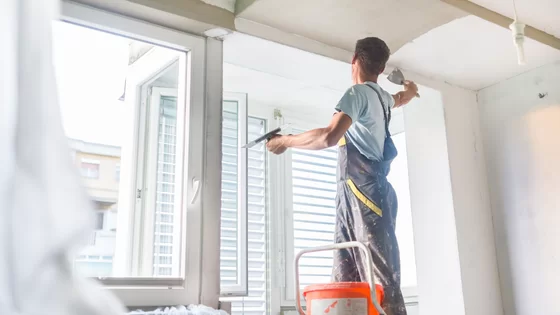Popcorn ceilings, also known as textured or acoustic ceilings, were a popular architectural choice in the mid-20th century. However, many of these ceilings contain asbestos, a hazardous material known to cause health issues. If you’re considering removing your popcorn ceiling, it’s crucial to understand the process and, most importantly, the average cost of remove asbestos from your ceiling. In this article, we will delve into the intricacies of asbestos-containing popcorn ceilings, the removal process, and the average cost involved.

The Hidden Danger Above
Popcorn ceilings, with their textured appearance, were installed in many homes from the 1950s through the 1980s. Unfortunately, during that period, asbestos was a common additive to popcorn ceiling materials. Asbestos was prized for its fire-resistant properties and durability. However, it was later discovered to be a health hazard when airborne asbestos fibers could be inhaled, leading to serious respiratory illnesses, including lung cancer and mesothelioma.
The Asbestos Dilemma
Determining whether your popcorn ceiling contains asbestos is the first step in assessing the cost of removal. You may consider these methods:
- Professional Inspection:
- Hiring a certified asbestos inspector is the most reliable way to determine the presence of asbestos in your ceiling.
- This typically involves collecting samples and sending them to a lab for analysis.
- Age of the Home:
- If your home was constructed before the mid-1980s, there is a higher likelihood of asbestos-containing materials in the popcorn ceiling.
The Removal Process
Removing asbestos from a popcorn ceiling is a delicate and potentially hazardous process. It should be carried out by trained professionals to ensure safety. The steps involved typically include:
- Isolation:
- The work area is sealed off to prevent asbestos fibers from spreading to other parts of the home.
- Ventilation and air filtration systems are set up to maintain a safe environment.
- Wetting the Surface:
- The ceiling is sprayed with water to prevent the release of asbestos fibers during removal.
- Careful Removal:
- Skilled technicians use specialized tools to scrape off the popcorn texture while minimizing damage to the underlying drywall.
- The removed material is carefully bagged and sealed for proper disposal.
- Cleaning and Testing:
- The work area is thoroughly cleaned, and air samples are taken to confirm that asbestos levels are within safe limits.
Factors Affecting Cost
The average cost to remove asbestos from a popcorn ceiling can vary significantly based on several factors:
- Ceiling Size:
- Larger ceilings will naturally require more time and materials, affecting the cost.
- Ceiling Height:
- High ceilings may require specialized equipment and scaffolding, increasing the cost.
- Complexity:
- Ceilings with intricate designs or irregular shapes may be more challenging to remove, affecting the price.
- Location:
- Regional variations in labor and disposal costs can influence the overall price.
The Average Cost
On average, the cost of removing asbestos from a popcorn ceiling can range from $3 to $7 per square foot. For an average-sized room with a 10×10-foot ceiling, the cost may be around $300 to $700. However, this cost can increase significantly based on the factors mentioned earlier.
Safety and Professionalism
While the cost of removing asbestos from your popcorn ceiling may seem significant, it’s crucial to prioritize safety. Hiring certified professionals with experience in asbestos removal ensures that the job is done correctly, and the health risks associated with asbestos exposure are minimized.
Conclusion
Removing asbestos from a popcorn ceiling is a task that should not be taken lightly. Prioritizing safety and professional expertise is paramount. Understanding the average cost and the factors that affect it will help you make an informed decision when it comes to addressing this hidden danger above. In the end, it’s an investment in the health and safety of your home and its occupants.